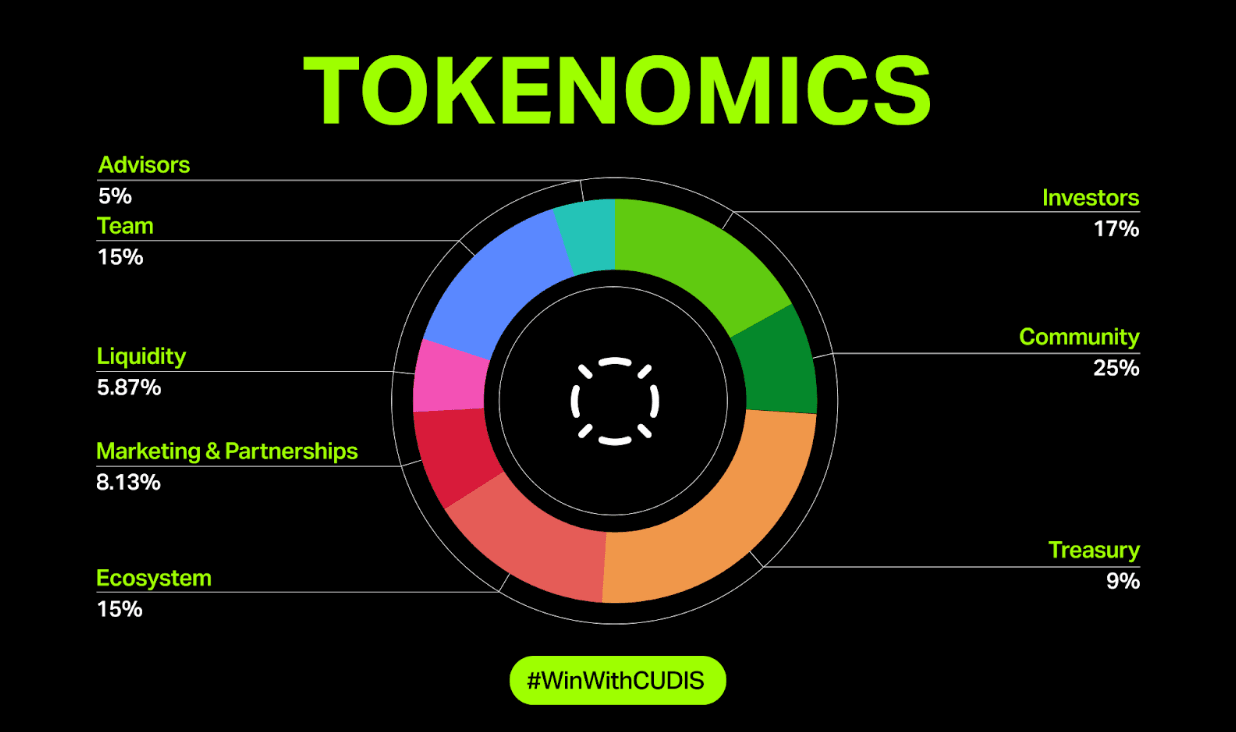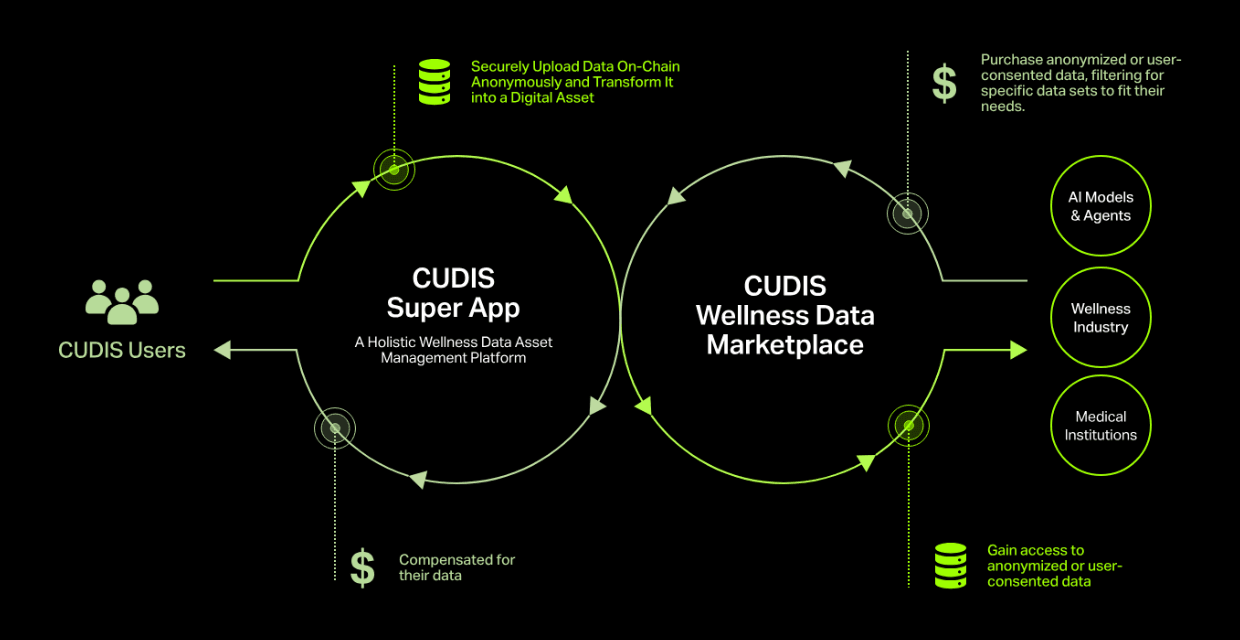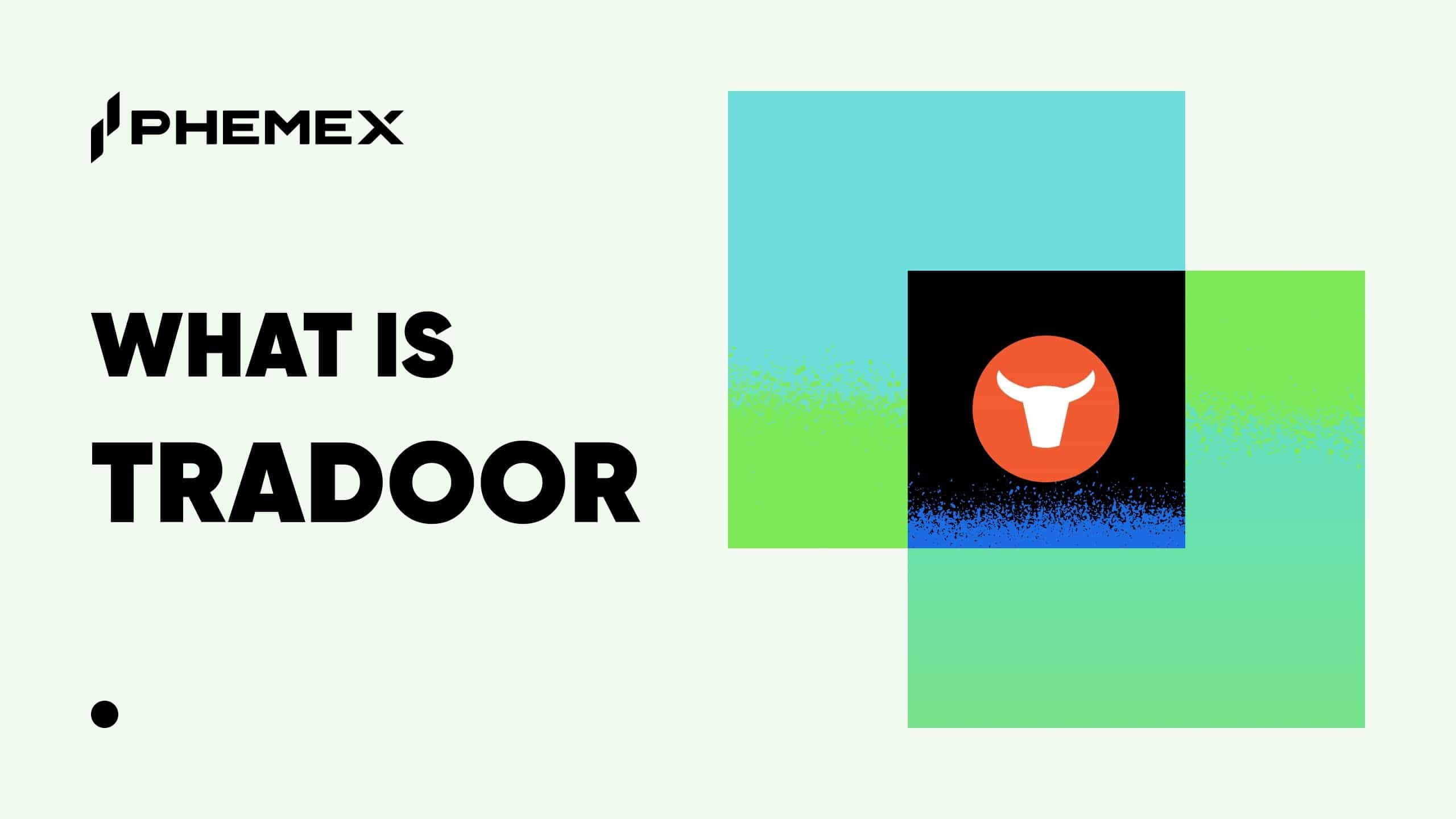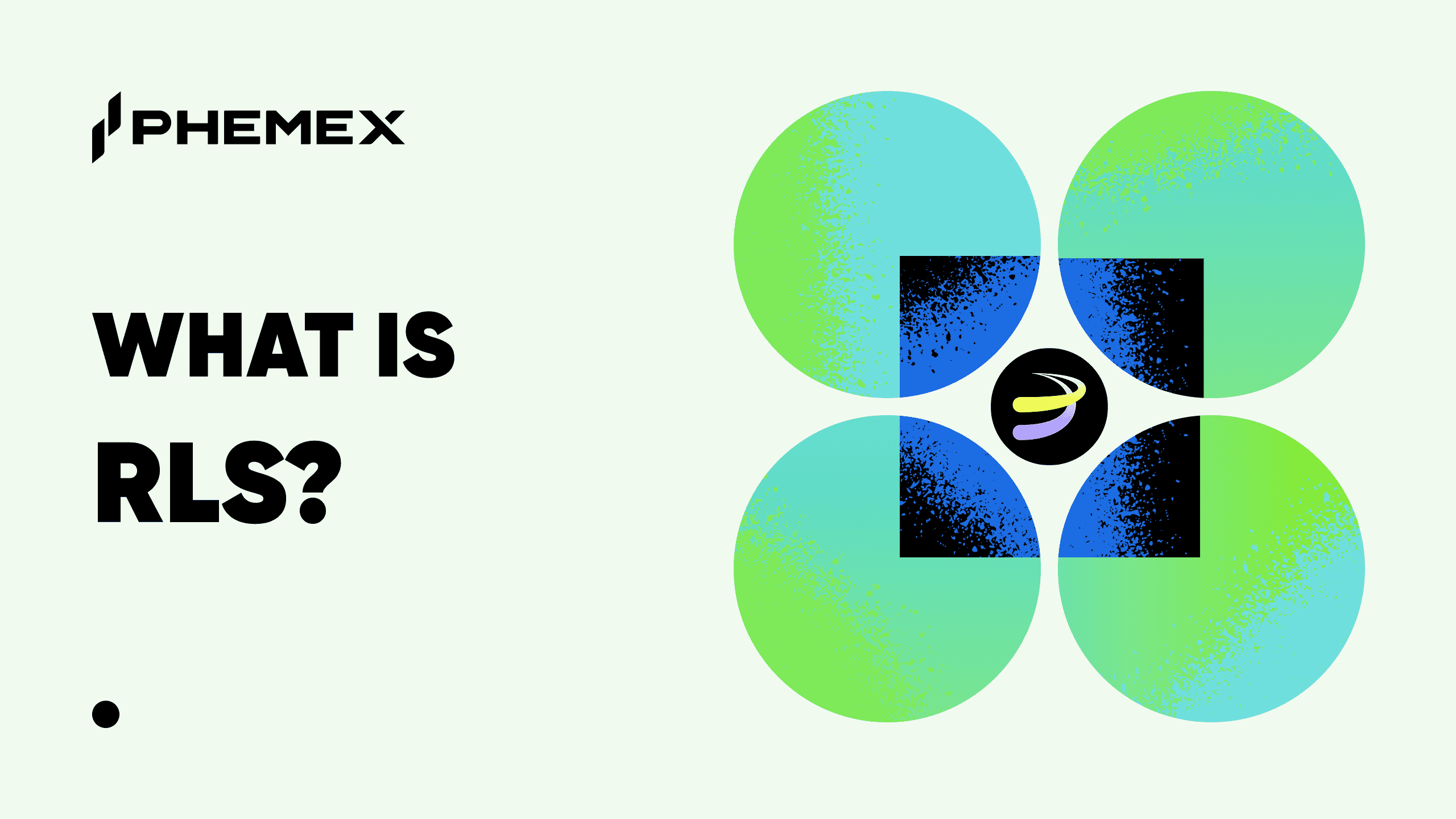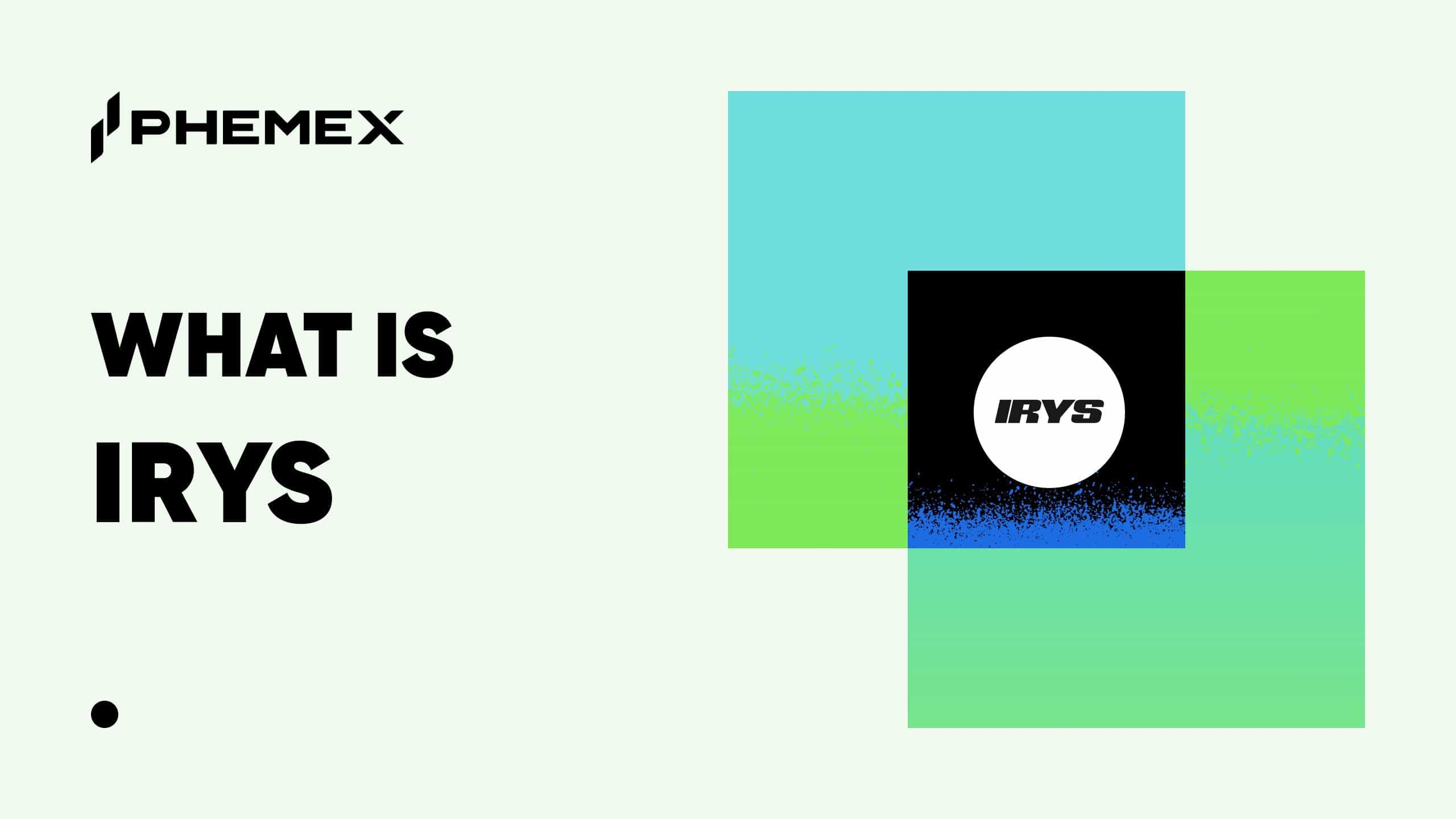CUDIS (CUDIS) is a Solana-based crypto project combining AI, wearables, and blockchain to reward healthy living. This in-depth guide explores its tokenomics, real-world use cases, team, and technology, while comparing it to StepN (GMT).
Quick Facts: CUDIS (CUDIS)
Ticker Symbol: CUDIS
Chain: Solana (SPL token; initial IDO on BNB Chain)
Contract Address: TBA (to be confirmed at launch)
Circulating Supply: 0 CUDIS (prior to launch)
Max Supply: 1,000,000,000 CUDIS
Primary Use Case: AI-powered “move-to-earn” longevity platform (wellness wearable + data ownership) rewarding healthy behaviors
Current Market Cap: N/A (launch June 2025)
Availability on Phemex: Not yet
What Is CUDIS?
Imagine a smart ring that tracks your fitness and sleep while rewarding you for healthy choices. That's CUDIS, a cryptocurrency project blending wellness and Web3. Branded as the first "longevity protocol," CUDIS uses blockchain, wearables, and AI coaching, empowering users with ownership of their health data.
CUDIS operates as a "move-to-earn" ecosystem where your steps, sleep, and stress can earn you crypto rewards. By incentivizing healthy behaviors through its native CUDIS token, it creates a financially rewarding model for wellness, merging healthy living with decentralized finance.
Launched in 2024, the CUDIS Ring syncs with a mobile "Super App," providing personalized health tips and allowing users to earn tokens through wellness challenges. Importantly, your health data is securely controlled on the Solana blockchain, addressing the issue of big tech harvesting fitness data for profit.
CUDIS aims to make wellness lucrative, transforming activities like jogging and sleeping into earnings within a decentralized economy. The token will be listed on major exchanges and connect crypto traders with health enthusiasts. In essence, CUDIS makes everyday wellness rewarding with a simple model: "exercise, earn, repeat."
How Many CUDIS Are There?
CUDIS has a fixed supply of 1 billion tokens, ensuring no inflation or endless mining. Currently, the circulating supply is zero as it hasn't officially launched yet. The Token Generation Event (TGE) in June 2025 will release 25% (250 million tokens), primarily from public sales and early supporter rewards. Tokenomics allocate 25% for offering, 50% for community rewards, 15% for the team (with a four-year vesting), and 10% for the project’s treasury.
CUDIS is designed to be non-inflationary, with all emissions coming from the pre-allocated rewards pool. While the circulating supply will grow as tokens vest, there is a cap of 1 billion tokens with no ongoing inflation. The project introduces deflationary mechanisms through small fees for services, potentially supporting token burns. CUDIS prioritizes rewarding active participants over aggressive burns, aiming for a sustainable economic model. By launch, only 25% of tokens will be in circulation, with the remainder released gradually to maintain stability. Overall, the framework seeks to balance user rewards and token value protection.
What Does CUDIS Do?
The CUDIS token ($CUDIS) is essential to the CUDIS ecosystem, functioning as the currency for a "health economy." Here are its core uses:
1. Rewards Healthy Behavior: Users earn CUDIS by engaging in healthy activities like exercising, improving sleep, or using the AI health coach—essentially “sweat mining” for crypto income.
2. Facilitates Data Monetization: Users can monetize their anonymized health data, allowing third parties such as researchers and healthcare companies to access insights in exchange for CUDIS tokens. This makes personal health data a tradeable asset.
3. Pays for Services & Products: CUDIS can be spent on premium wellness services in the Longevity Hub, including personalized supplements and advanced health analytics, creating a self-sustaining health economy.
4. Staking and Governance: Users can stake their tokens to earn passive income and gain voting rights on platform decisions, enhancing community involvement.
5. Fueling Ecosystem Growth: CUDIS tokens are used to fund innovations like new health dApps and research, increasing demand as more applications integrate with the platform.
In summary, CUDIS serves as a rewarding, spendable, stakeable, and data-exchange currency, aiming to foster a holistic wellness economy. By engaging in healthy activities and participating in the ecosystem, users can benefit financially while promoting healthy living.
CUDIS vs StepN (GMT)
Any discussion of "move-to-earn" crypto often highlights StepN, the viral app millions used to earn tokens through jogging. But how does CUDIS compare to StepN (GMT), the leader in this space? Both projects utilize Solana's fast blockchain and reward physical activity with crypto, but they differ significantly in philosophy and execution.
-
Technology & Infrastructure: Both StepN and CUDIS harness Solana for fast, low-cost transactions. However, while StepN relies solely on smartphone GPS and motion sensors, CUDIS introduces a dedicated wearable device—the CUDIS Ring—and a more complex data infrastructure, including on-chain data NFTs and node operators. This suggests that CUDIS offers greater decentralization of health data ownership, whereas StepN provides a simpler user experience.
-
Use Case & Scope: StepN focuses narrowly on gamified fitness, rewarding users for walking or running by purchasing NFT sneakers. In contrast, CUDIS aims to be a comprehensive health and longevity platform, tracking various health metrics like heart rate and stress, offering AI-guided insights, and monetizing health data. While StepN pays users to exercise, CUDIS pays them to improve their health and share insights, making it a broader wellness offering.
-
Economic Model: Both tokens reward users, but StepN's economy faced inflation issues due to excessive token distribution and dependence on new users. CUDIS appears to have a more sustainable model with a fixed supply and real-world demand for health data, positioning itself as a utility-driven evolution of move-to-earn.
-
Decentralization & Community: StepN, while having community proposal mechanisms, is centrally run by Find Satoshi Lab. CUDIS, however, emphasizes community governance and ownership of data, with decentralized identity features and collaborations with health DAOs. Yet, StepN successfully built a passionate community due to its simplicity, while CUDIS requires investment in hardware.
In summary, CUDIS presents a more multi-faceted approach that encompasses broader health goals compared to the gamified focus of StepN.

The Technology Behind CUDIS
CUDIS is more than just a tokenized step-counter; it combines advanced blockchain technology with healthtech. Here's an overview of its infrastructure:
Blockchain Backbone (Solana) - CUDIS operates on the Solana blockchain, esteemed for its speed and low transaction costs. Solana's Proof-of-Stake and Proof of History enable rapid, cost-effective transactions, making it ideal for logging health data and micro-rewards. CUDIS uses Solana's SPL token standard for smart contracts and provides robust data security through decentralization. This infrastructure supports the continuous interactions required for health tracking.
AI and Wearable Tech - CUDIS features an "AI Longevity Coach," a real-time algorithmic assistant providing personalized health advice based on user data. Although the AI runs on cloud infrastructure rather than the blockchain, it learns and improves over time from user inputs. The CUDIS Ring is a sophisticated wearable filled with various sensors, capable of securely signing and uploading health data as NFTs. This allows users to share or sell their data via smart contracts while ensuring privacy through a Longevity Decentralized ID (LDID).
Decentralized Data Infrastructure - To manage health data efficiently, CUDIS employs a mix of on-chain and off-chain storage, likely through decentralized solutions like IPFS/Filecoin. Community-run Progressing Nodes process encrypted health data, earning CUDIS tokens while maintaining sustainability. All transactions involving data uploads or AI services are handled with CUDIS tokens, promoting a balanced fee structure.
Integration and Partnerships - CUDIS leverages existing technologies, integrating with over 70 health data sources via API connections, allowing users to link their current devices to the CUDIS app. Collaborations with networks like NATIX further enhance its capabilities, suggesting a seamless integration of various health data sources.
Team & Origins
CUDIS was founded in 2023 by a team of tech entrepreneurs and wellness experts, many of them alumni from UCLA and UC Berkeley. Leading the charge is CEO Edison Chen, a Web3 product builder and early crypto investor. He advocates merging AI, biotech, and blockchain to make health optimization accessible for all.
CUDIS gained early credibility by winning an honorary award in the Solana 2024 Hackathon and subsequently raised $5 million in seed funding, notably led by Draper Associates. This backing highlights the potential of their decentralized wellness approach in the expansive healthcare market.
Based in Miami, CUDIS operates under Beatbit Inc. and is navigating the balance between decentralization and regulatory compliance. They've partnered with UCLA Athletics to field-test their wearable tech, the CUDIS Ring, which launched in late 2024. This approach of delivering a physical product before the token economy adds credibility to their mission.
CUDIS presents themselves as pioneers in the "longevity protocol" sector, blending startup culture with wellness ideals. Their commitment to community and grassroots growth, alongside ambitious plans through 2027, will be crucial in demonstrating their capability and vision.
Key News & Events
-
Q2 2024 – Project Launch: CUDIS debuts by selling Genesis Rings and launching its app for tracking health metrics. It won a DePIN Track Honorary Award at the Solana "Riptide" Hackathon.
-
Mid 2024 – Fundraising & Growth: A $5M seed funding round led by Draper Associates fuels development. User numbers rise as fitness enthusiasts engage with the app’s health-to-earn features. Community initiatives begin.
-
Late 2024 – Partnerships: CUDIS secures partnerships, notably with UCLA Athletics, and collaborates with other blockchain projects for verification and health data integration. By year's end, there are over 100,000 app users.
-
May 2025 – Pioneer Package: CUDIS launches a "Pioneer Package" presale for $500, selling out quickly. Impressive stats are revealed: over 20,000 rings sold and 200,000 app users.
-
June 5, 2025 – Token Launch: CUDIS holds a public Token Generation Event (TGE). Media coverage surges as it transitions to a full crypto economy.
-
Post-Launch 2025 – Roadmap: CUDIS will focus on delivering new features, including a public Longevity Hub and AI Coach 2.0, while targeting more exchange listings and enterprise partnerships in the wellness industry.
Is CUDIS a Good Investment?
Now for the golden question on every prospective investor's mind: Does CUDIS have real investment potential? As with any cryptocurrency, the answer isn't black-and-white. CUDIS straddles an interesting line because it's not just selling a vision of Web3, but also tapping into the colossal wellness industry. This dual nature could be its greatest strength or a double-edged sword. Let's weigh the considerations.
The Bullish Case: On the optimistic side, CUDIS has a lot going for it. First, the project has tangible traction and a real product – a rarity among token launches. With over 200,000 users and $6M in product revenue before the token even existed, CUDIS starts miles ahead of many crypto projects that launch on hype alone. This existing community provides a user base to drive organic token demand (people who actually want CUDIS tokens to use in-app, not just traders). The fact that major investors like Draper Associates and SkyBridge Capital backed CUDIS lends it credibility and a safety net; these firms typically do due diligence, suggesting CUDIS isn't a fly-by-night operation. The market CUDIS addresses – health and longevity – is enormous and growing, with hundreds of billions spent annually. If CUDIS captures even a tiny slice by incentivizing healthy behavior, the upside could be significant. The token could benefit from network effects: as more users join and more data is generated, CUDIS's data marketplace becomes more valuable, potentially driving token demand up.
Also, CUDIS hits several hot trends: AI, wearables, DeFi, data privacy. It's a story that's easy to market - "get paid to get healthy", which could spur viral growth if executed well. Its presence in the DePIN sector (decentralized physical infrastructure) might attract a wave of investors looking for the next big thing after DeFi and NFTs. CUDIS also has an active development roadmap – upcoming features like staking, launchpad, and international expansion can act as catalysts for token appreciation as each milestone shows progress.
The Bearish Case: However, potential investors should also heed the risks. The concept of "move-to-earn" has seen volatility and hype cycles – StepN's GMT token, for instance, soared massively and then crashed over 80% as its user growth stalled and the token economy faced inflation issues. CUDIS will need to prove it can avoid a similar fate by sustaining user engagement and balancing token emissions. If the novelty wears off (e.g., people might get bored of wearing a ring just as some got bored of StepN's daily grind), user numbers could drop, undermining the demand side of the token drastically. Competition is another factor: CUDIS is an innovator, but nothing stops bigger players from entering this space. Imagine if Apple or Google decided to integrate crypto rewards into their health apps – they have massive distribution and could overshadow CUDIS overnight. Even within crypto, there are other move-to-earn or DePIN projects emerging, and CUDIS will have to continuously differentiate itself with superior tech and partnerships.
Regulatory and ethical hurdles also loom. Health data on blockchain is sensitive. Privacy regulations and potential government scrutiny could impact how freely CUDIS can operate or monetize data. From an investor standpoint, one should ask: where does token value accrue? CUDIS tokens are utility tokens, not equity in the company. Their value will depend on platform usage (more users and data = more demand for tokens) and speculative sentiment. If the platform does well, the token could appreciate, but if the platform stagnates, the token could languish even if the company behind CUDIS finds other revenue (like selling rings). It's also worth noting that about 75% of tokens are locked at launch – as these unlock over time, there is a risk of sell pressure from insiders or early buyers taking profit, which could dampen price unless matched by new demand.
The Balanced View: Is CUDIS a good investment? It can be for the right investor with the right timeframe. If you believe in the convergence of crypto and healthtech and are willing to bet on a startup-like venture, CUDIS offers a high-upside, high-risk opportunity. The project's strong foundation and novel idea give it a fighting chance to become a category leader in decentralized wellness. If it succeeds, early CUDIS investors could see significant returns not just financially but also in being part of a movement that changes how we value health. On the flip side, one should be prepared for volatility. As a newly launched token, expect rollercoaster price swings, especially given broader crypto market moods. The CUDIS investment potential hinges on continued execution. Regularly follow news about CUDIS and track the CUDIS price on reliable sources to gauge momentum and sentiment.
In investing, as in health, a balanced approach is wise. Diversify, do your own research, and consider whether the project's fundamentals align with your risk tolerance and beliefs. CUDIS is pioneering something exciting at the crossroads of two dynamic fields, but it is still a nascent venture. As always, this analysis is meant to inform but not advise. Only you can decide if CUDIS fits in your portfolio or if it's an experiment you'd rather watch from the sidelines. And remember: Not financial advice. Stay healthy, stay informed, and happy investing!






